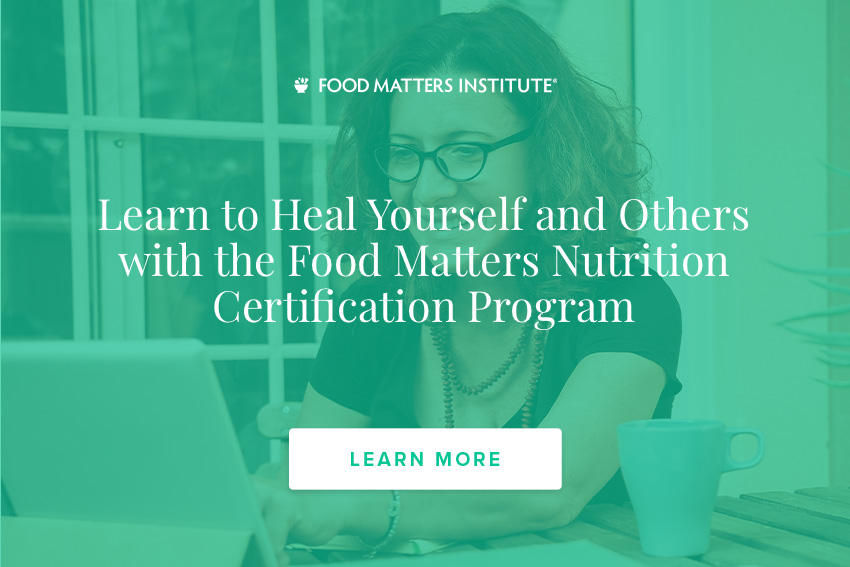Food Cravings & Neurotic Habits: Where Are They Coming From?
If you have ever had an urgent yearning for doughnuts, chocolate or pickled onions, fear not, you are most certainly not alone. When does a liking for a particular food become a craving, as opposed to a food addiction or weird obsession? Can we stop the desire to succumb to overeating?
The good news is that, yes, you can overcome the desire to overeat. As a self-confessed comfort eater, carbs used to be my go-to solution (or excuse) to solve any problem the world threw at me. Once you know how to overcome craving triggers, food cravings and overeating will simply disappear and become a distant memory. Let’s have a look at what’s really going on when you get that late-night craving for cookies and milk or a bag of salted chips. Food cravings are thought to be triggered by the areas of the brain that are responsible for memory and pleasure, creating an addictive cycle of eating to make us feel good.
Specific regions of the brain appear to be activated when you experience food cravings. The memory areas of the brain are responsible for associating a specific food to an emotional response, thereby giving new meaning to the term ‘comfort eating’. You could actually call this food addiction, as overweight people tend to show a greater pleasure response to food than those who maintain a normal weight. Some medications prescribed to assist weight loss therefore target the feel-good neurotransmitters to increase serotonin and noradrenaline, reducing the desire to eat to feel good.
Eating delicious foods abundant in fat and sugar disrupts the natural balance of the body. These foods are high in calories but most often low in nutrients. Eating high-calorie foods that are devoid of nutrients has a stimulating effect on the body to seek further nutrients. The common misconception that a little bit of extra padding equals well-nourished couldn’t be further from the truth. In many cases the more overweight we are, the more we are malnourished due to the higher intake of junk and nutrient-poor foods. Regular intake of high-fat and high-carbohydrate foods is associated with higher ghrelin and lower leptin concentrations (the hormones that regulate hunger and satiety), further inhibiting weight loss, as the body doesn’t know when to stop eating.
The Gut Connection
Constant sugar cravings may be a sign that the natural microflora (bacteria) in our gut is out of whack. When the gut is healthy it sends normal healthy appetite signals; however, when the microflora is out of balance – a condition called dysbiosis – it can upset the natural healthy functioning of our intestines, which also affects general health and wellbeing. As the bad bacteria feed and multiply in a high-sugar or yeast environment, our bodies will respond to craving and eating more of these foods to promote the growth of the bad bacteria. This natural human response to eat more only serves to further disrupt the health of the gut. So the only way we can take back control of these bad bugs is to temporarily eliminate their energy source – sugars and yeasts.
The Opioid Effect
Some foods contain opioids, which trigger a short-term chemical response in the body to make us feel good. An opioid is a psychoactive chemical that works by binding to opioid receptors, which are found principally in the central and peripheral nervous system and the gastrointestinal tract. Opioids are a class of chemicals which include natural opiates derived from poppies such as morphine and heroine and synthetic opioids such as methadone. Our bodies can make opioids in the form of feel-good endorphins.
Opioid-Containing Foods
Wheat and gluten
When digested, gluten (a protein in wheat) produces fragment peptides that can also act as opioids, called gluten exorphins. Many people claim they feel foggy in the head after eating products such as bread, cakes and pasta, which is most likely from the drug-like effect of the gluten.
When the body digests gliadin (a protein also found in wheat), it produces gliadorphin, which is a fragment peptide that can act like an opioid. This binds to the opiate receptors in the brain, making us crave more food. This explains why we find it so hard to stop at just one cookie or a piece of bread.Both wheat and gluten can provoke inflammatory reactions in the gut; some people find they experience bloating, belching and brain fog after consuming too many wheat or gluten products.
If you’ve noticed these symptoms after eating bread, pasta and other wheat or gluten foods, it may be time to reduce or even eliminate them from your diet for a while to see how you feel. Gluten-containing foods include flour, bread, pasta, pizza, cereals, cakes, cookies, muesli bars and processed foods. Starch and thickeners in sauces can contain gluten, even soy sauce, lollies, medications, vitamin supplements, tabasco sauce and tomato sauce. Always check food labels for gluten. Foods labelled as gluten-free must not contain any detectable gluten.
Dairy
Have you ever found yourself sitting in front of an empty cheese board thinking, ‘how did that just happen? I only meant to have one piece!’ Cheese can have ‘drug-like’ addictive properties. Casein is a protein found in dairy which, when partially digested, produces an opioid-acting peptide called casomorphin.
There are also proteins in whey called α-lactalbumin and α-lactoglobulin that when digested produce fragment peptides called α-lactorphin, which act as opioids.
Sometimes cravings for dairy products can be a symptom of an imbalance in the hormone oestrogen, which is required for the absorption of calcium. Dairy contains essential nutrients that help regulate hormones. If your dairy cravings are getting out of control it may be worth looking at natural ways to balance your hormones.Interestingly, mature or fermented cheese may interact with some medications such as antidepressants and therefore must be avoided. This is known as the ‘cheese reaction’: aged cheese contains a high level of the chemical tyramine, which builds up in a person if they are taking monoamine oxidase inhibitors (MAOI) antidepressant medication. Normally an enzyme in your digestive tract keeps tyramine levels within a safe range; however, when MAOI medication is taken this enzyme no longer controls tyramine. When tyramine levels increase, potentially serious reactions can occur such as high blood pressure, headaches, heart problems, nausea, vomiting and disorientation. Other foods that contain high amounts of tyramine include cured ham and meats, soy sauce, legumes, shrimp paste, coconut, yeast, bananas, peanuts, pineapple, avocado, eggplant, tofu, sauerkraut, pickled foods and beer.It really is quite simple, the more wheat and dairy you consume, the more you crave it and the more you eat!
Have you ever found yourself sitting in front of an empty cheese board thinking, ‘how did that just happen? I only meant to have one piece!’ Cheese can have ‘drug-like’ addictive properties. Casein is a protein found in dairy which, when partially digested, produces an opioid-acting peptide called casomorphin. There are also proteins in whey called α-lactalbumin and α-lactoglobulin that when digested produce fragment peptides called α-lactorphin, which act as opioids.Sometimes cravings for dairy products can be a symptom of an imbalance in the hormone oestrogen, which is required for the absorption of calcium. Dairy contains essential nutrients that help regulate hormones. If your dairy cravings are getting out of control it may be worth looking at natural ways to balance your hormones.
Interestingly, mature or fermented cheese may interact with some medications such as antidepressants and therefore must be avoided. This is known as the ‘cheese reaction’: aged cheese contains a high level of the chemical tyramine, which builds up in a person if they are taking monoamine oxidase inhibitors (MAOI) antidepressant medication. Normally an enzyme in your digestive tract keeps tyramine levels within a safe range; however, when MAOI medication is taken this enzyme no longer controls tyramine. When tyramine levels increase, potentially serious reactions can occur such as high blood pressure, headaches, heart problems, nausea, vomiting and disorientation. Other foods that contain high amounts of tyramine include cured ham and meats, soy sauce, legumes, shrimp paste, coconut, yeast, bananas, peanuts, pineapple, avocado, eggplant, tofu, sauerkraut, pickled foods and beer.It really is quite simple, the more wheat and dairy you consume, the more you crave it and the more you eat!
Junk Food Addiction
Eating junk food high in fat, salt and sugar can relieve pain or stress and calm us down by stimulating endorphins or feel-good chemicals. Eating these highly palatable foods activates the opioid circuits in the brain, which in turn encourages us to eat more. Junk food is therefore highly addictive – the more you eat, the more you crave. Gradually weaning yourself off these foods and replacing them with healthier options will in time curb the cravings.
De-Stress To Discourage Cravings
Cravings often become worse when you're stressed or anxious. The more stressed you are, the more you crave high-carbohydrate foods. Carbohydrates boost serotonin, which has a feel-good, calming effect. Carbohydrate cravings can also be a sign of nutrient deficiencies, as the body needs more nutrients, particularly B vitamins, in times of stress. Vitamin B6 is involved in serotonin production and a deficiency of this vitamin may lead to anxiety and carbohydrate cravings.
Eating a diet lacking in variety can also lead to nutrient deficiencies and food cravings. A condition called pica is recognised by the medical profession and is characterised by cravings for non-edible substances, such as ice, clay, chalk, dirt or sand. Pica is more commonly seen in children and women, particularly pregnant women, and those with developmental disabilities. This abnormal craving is thought to be caused by a mineral deficiency.
Often the substance being craved contains the mineral in which that individual is deficient. The body has an innate way or trying to speak to us and food cravings are part of that. Craving a particular substance or food is a sign that your body needs specific nutrients; however, knowing which foods to eat is important. If you have constant cravings for a particular food or drink, pay attention to what your body is trying to tell you. It could well be that you are in need of particular nutrients.
Do You Have Food Cravings? Tell Us What Has Helped You Deal With Them In The Comments Below.
Do you have a passion for nutrition & natural healing?. Learn more about the Food Matters Nutrition Certification Program here.


